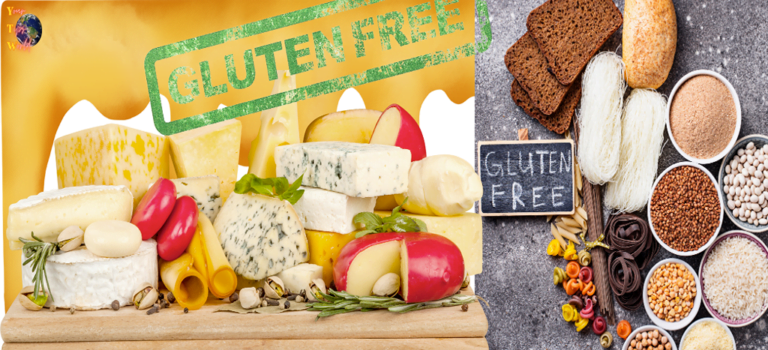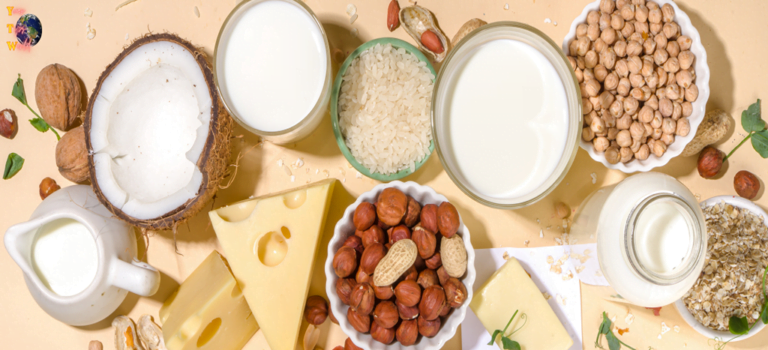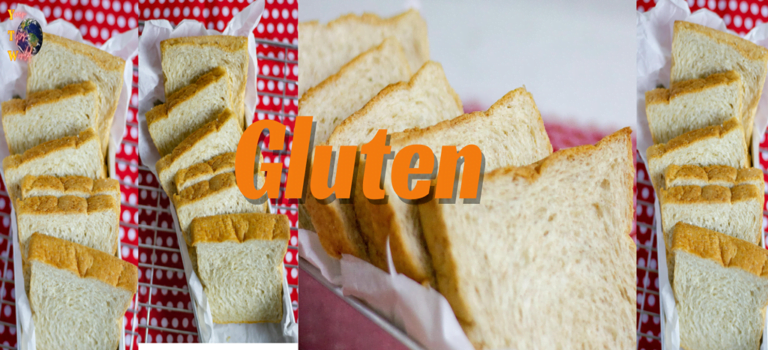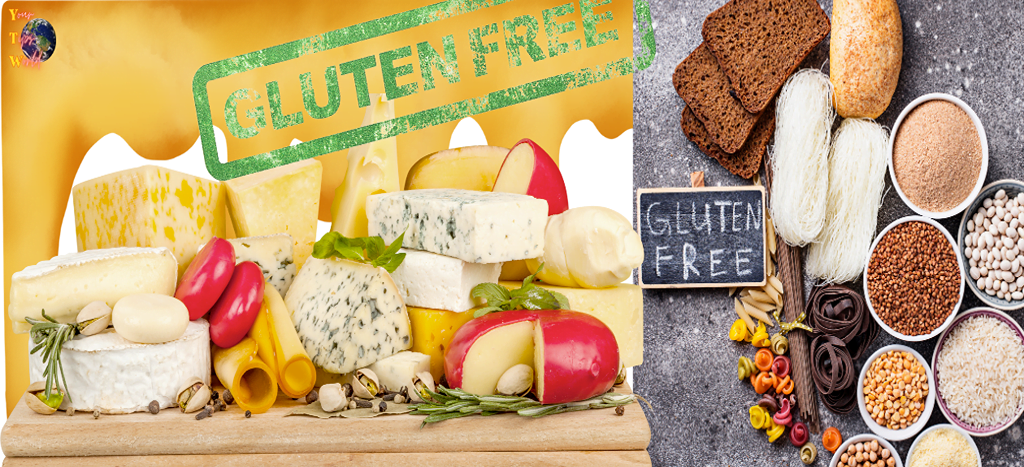In almost every gluten-free community, queries related to eating different food types are a daily concern. This is especially true for products like cheese, which isn’t always straightforward. This post will explore the gluten status in Cheese and give an answer to “Is Gluten Free Cheese exist?”.
This is a very important topic to cover for people having celiac disease or are sensitive to gluten. It also serves the same importance to health-conscious readers and food enthusiasts, looking for safe and quality of food to include in their diet plan.
Is Cheese Gluten-Free or Gluten free cheese present?

At its core, most traditional cheeses are inherently gluten-free. They are produced by the coagulation of milk proteins (casein) using enzymes and culture, which do not contain gluten. But as they say it, the devil is often in the details. Here in this particular case, it is the risk of cross-contamination with gluten-containing ingredients and other additives used during the cheese-making process.
As per the Celiac Society, “Pure cheese, made with natural cheese-making cultures, is usually safe for people with celiac disease or gluten sensitivity.” But they also warn the folks about additional ingredients coming into the scene, like the ones found in cheese flavored with additives or processed cheeses, which can increase gluten exposure risk.
“When sourcing cheese for a gluten-free diet, it’s important to ensure no cross-contamination during production.” – Certified Nutritionist Smith
Understanding Cheese Production for Gluten Sensitivity

Dairy Industry Expert Johnson explains that “Gluten-free cheese should be made using a gluten-free starter culture and enzymes,” suggesting that those on gluten-free diets should inquire about the production process. Some cheeses might be ruled out based on the use of beer, ale, or wheat-based ingredients in flavorings.
What about blue cheeses, which historically utilize bread mold? Modern production of these cheeses now often involves synthetic, gluten-free mold spores, but it’s always best to check with manufacturers directly if cross-contamination may be a concern.
The Cheese-Labeling Conundrum
Reading labels is crucial. Look for a gluten-free certification or statement that addresses cross-contamination practices. If you’re unable to verify, consider reaching out to manufacturers or selecting Gluten Free Cheese that are labeled as gluten-free.
Anecdotes from the Gluten-Free Frontlines
Personal experiences can be telling. Many who adopt a gluten-free lifestyle report feeling better when consuming less processed cheese options, opting for aged cheeses which some experts claim may contain even less trace gluten due to the fermentation process.
“Some individuals with gluten sensitivity may still react to certain proteins in cheese; careful selection is crucial.” – Celiac Specialist Dr. Lee
This calls for vigilance about the types of Gluten Free Cheese one chooses. Cheese such as cottage or ricotta might have higher chances of containing gluten from added ingredients or contamination.
Concluding lines
Here the whole pathway followed through the world of Gluten Free Cheese depicts that almost all types of traditional cheese should be safe, but still, it leaves a lot to consider for those having gluten sensitivities. Always go through the labels and certificates available, gather an understanding of production processes, and reach out to producers to clear doubts, if any, for peace of mind.
Delving into the subtleties of a life without the fear of gluten is a complex task to go for, but when you have the right knowledge and vigilance then one can navigate through these waters with quite ease and comfort and then enjoy Gluten Free Cheese. We hope this blog post has helped clarify your cheese-related concerns and empowered you to make informed dietary choices.
Remember, the journey to gluten-free living is shared by many, and your efforts today can help cultivate a healthier, safer, and tastier tomorrow.
Important point: The information provided in this blog post is for educational purposes only and should not be considered medical advice. Always consult with a qualified healthcare provider before making changes to your diet.
Various doubts and Questions around Gluten Free Cheese

are cheese curds gluten free?
Based on the ingredients and the processing way, Cheese curds of various types may or may not have gluten. Commonly available cheese curds are as Cheddar, Mozzarella, and Gouda.
The potential gluten content of cheese curds is largely dependent on any added flavorings or seasonings. For example, some flavored cheese curds may contain ingredients such as malt vinegar or wheat-based seasonings, which would introduce gluten into the product. The risk of cross-contaminations increases if the production facility deals with gluten-containing ingredients
Always be enquisitive about the ingredients label if it has any potential source of gluten, while buying cheese curds. few brands do put Gluten-free lable on the packaging so you can also look for it to ensure it is safe to consume for gluten sensitive folks.
In summary, the gluten content of cheese curds varies depending on the specific type and any additional ingredients or processing methods used.
dairy and gluten free macaroni cheese?
Ingredients for Dairy and Gluten-Free Macaroni and Cheese:
– Gluten-free macaroni pasta
– Dairy-free cheese alternative (such as cashew cheese or nutritional yeast)
– Gluten-free all-purpose flour
– Dairy-free butter alternative
– Gluten-free breadcrumbs (optional)
– Dairy-free milk alternative (such as almond milk or oat milk)
– Salt, pepper, and nutmeg (for seasoning)
Alternatives: you can use gluten-free macaroni made from rice or quinoa instead of traditional wheat pasta. Use a dairy-free cheese alternative made from nuts, nutritional yeast, or a store-bought dairy-free cheese in place of cheese sauce. substitute traditional butter by a dairy-free butter something like coconut oil or avocado oil.
Instructions:
1. Cook the gluten-free macaroni according to the package instructions.
2. In a separate saucepan, melt the dairy-free butter alternative and whisk in the gluten-free all-purpose flour to create a roux.
3. Gradually whisk in the dairy-free milk alternative to create a creamy sauce.
4. Stir in the dairy-free cheese alternative until melted and smooth.
5. Season with salt, pepper, and nutmeg to taste.
6. Combine the cooked macaroni with the cheese sauce and top with gluten-free breadcrumbs if desired.
7. Bake until bubbly and golden brown on top.
Enjoy the freshly made delicious dairy and gluten-free macaroni and cheese!
does shredded cheese have gluten
Most shredded cheeses are naturally gluten-free, as the basic ingredients are simply milk, enzymes, salt, and sometimes cultures. Brands like Kraft and Sargento typically produce shredded cheeses that are considered gluten-free. Chesk for labels or connect iwht producer to ensure if it actually is gluten free. Some varieties can contain added ingredients or undergo additional processing that could introduce gluten in it.
Cross-contamination is a potential risk for shredded cheese, as it may come into contact with gluten-containing ingredients or processing equipment during manufacturing. This can happen at any stage of the production process hence, equally important to be aware for individuals with celiac disease or gluten sensitivities.
In conclusion, many shredded cheese varieties are gluten-free, including popular brands like Kraft and Sargento.
gluten free broccoli cheese soup?
1. Purchase gluten-free cream cheese and American cheese from the Adams Cheese Shop. Only take the product stating that the products are gluten-free on the packaging.
2. Also keep a close eye on labels of all the other ingredients, like broth, milk, and seasonings, to confirm gluten-free. Look out for any hidden sources of gluten, such as wheat starch or modified food starch made from wheat.
3. Gather the remaining ingredients, like broccoli, gluten-free chicken or vegetable broth, gluten-free milk, garlic, onion, salt, and pepper.
4. In a large pot, sauté the garlic and onion until they are soft and fragrant.
5. Add the broccoli, chicken or vegetable broth, and seasonings to the pot. Bring the mixture to a boil, then simmer until the broccoli is tender.
6. Once it is tender, use an immersion blender to puree the soup to the desired consistency.
7. Stir in the cream cheese and American cheese until they are melted and fully mixed into the soup.
8. Serve the gluten-free broccoli cheese soup hot and enjoy your delicious, gluten-free meal from Adams Cheese Shop.
Look for certification symbols such as the “Certified Gluten-Free” label. Choose natural, non-processed ingredients to ensure gluten-free status.
Enjoy your delicious and nutritious gluten-free cheese broccoli soup!
gluten free cottage cheese pancakes?
To make gluten free cottage cheese pancakes,
start by combining 1 cup of gluten free cottage cheese, 4 eggs, and 1/2 cup of almond flour in a bowl.
Mix together until well combined.
You can add some vanilla extract or sweetener for extra flavor as per your taste.
Ensure that only certified gluten free products are used.
Next, heat a non-stick skillet or griddle over medium heat and lightly grease with cooking spray or oil.
Once the skillet is hot, pour 1/4 cup of the pancake batter onto the skillet for each pancake.
Cook for 2-3 minutes on each side, until the pancakes are golden brown and cooked through.
Add any additional flavorings or add-ins like blueberries, chocolate chips, or cinnamon to customize your pancakes to your liking.
Serve the gluten free cottage cheese pancakes warm with your favorite toppings such as maple syrup, fresh fruit, or a dollop of yogurt.
the almond flour adds a nutty flavor and a boost of protein to these pancakes. Your delicious and nutritious gluten free pancakes as a breakfast option is ready which can be enjoyed by those with dietary restrictions.
gluten free crockpot mac and cheese?
To make gluten-free crockpot mac and cheese, start by ensuring that all ingredients are gluten-free. Use gluten-free pasta such as rice or corn pasta and gluten-free seasonings. For the cheese, opt for gluten-free varieties such as cheddar, mozzarella, and parmesan.
To prepare the dish, start by cooking the gluten-free pasta according to packaging instructions and then drain it. In the crockpot, mix the cooked pasta with the gluten-free cheese, ensuring that it is evenly distributed. Add any gluten-free seasonings, such as salt, pepper, or garlic powder, to taste.
Set the crockpot to low and cook the mac and cheese for 2-3 hours, stirring occasionally to prevent sticking. Make sure the pasta is cooked through and the cheese is melted and creamy. For a crispier top, you can finish the dish under the broiler for a few minutes.
Once finished, serve the gluten-free crockpot mac and cheese hot and enjoy your delicious and safe meal. Remember to always check the labels of ingredients to ensure they are gluten-free.
gluten free grilled cheese near me?
At the Adams Cheese Shop, you can find a variety of gluten free cheeses to enjoy. Pure cheeses such as cheddar, mozzarella, and Swiss are naturally gluten free and are available for purchase. However, it’s important to note that flavored or processed cheese products may contain gluten due to added ingredients or cross-contamination during production. If you are looking for a gluten free option, it’s best to stick to pure cheeses.
If you are considering vegan cheese as a gluten free alternative, be aware that some vegan cheeses may contain oats, which may or may not be gluten free depending on the processing methods. It’s important to carefully review the ingredients of any vegan cheese products to ensure they are safe for a gluten free diet.
In conclusion, when shopping for gluten free cheeses at the Adams Cheese Shop, be sure to choose pure varieties and carefully check the ingredients of any flavored, processed, or vegan cheese products to ensure they meet your dietary needs.
gluten free velveeta cheese?
When determining if Velveeta cheese is gluten free, start by checking the label for any additives, flavorings, or dairy alternatives that may contain gluten. Look for ingredients like wheat, barley, rye, or malt, which are indicators of gluten. Additionally, search for the gluten free label on the packaging to ensure it is safe for consumption. Manufacturers often include this label to make it easier for those with gluten sensitivities to identify safe products. If the label does not specifically state that the Velveeta cheese is gluten free, or if you are unsure about any of the ingredients listed, it is best to contact the manufacturer directly for more information. By reaching out to the manufacturer, you can gain a clear understanding of whether or not the Velveeta cheese contains any gluten-containing ingredients or may have come into contact with gluten during the production process. Prioritizing these steps will help ensure that you are consuming Velveeta cheese that is gluten free and safe for your dietary needs.
is beer cheese gluten free?
Beer cheese may or may not be gluten free, depending on the ingredients and production process. Many traditional beer cheese recipes include beer, which typically contains gluten. Additionally, some recipes may use flour or other gluten-containing ingredients as thickeners. As a result, these types of beer cheese are not gluten free.
Even if a beer cheese recipe itself is gluten free, there is a risk of gluten contamination during production. For example, if the same equipment is used to produce both gluten-containing and gluten-free products, there is a higher risk of cross-contamination.
Some types of beer cheese may also contain gluten due to added flavorings or thickeners. Therefore, it is important to carefully read the ingredient list and look for any potential sources of gluten.
To identify gluten-free beer cheese options, look for products that are specifically labeled as gluten free. Additionally, search for beer cheese recipes that use gluten-free beer and thickeners, such as cornstarch, instead of flour. By being mindful of the ingredients and production process, it is possible to find gluten-free beer cheese options.
is nacho cheese gluten free?
Nacho cheese can be gluten-free, but it is important to carefully read the label to ensure it does not contain any gluten-containing ingredients or potential cross-contamination during the manufacturing process. Flavored or processed cheese products may pose a risk of containing gluten, so it is crucial to be vigilant when selecting nacho cheese.
When checking the label, look for a specific indication that the nacho cheese is gluten-free. This could include a “gluten-free” label, or a list of ingredients that does not contain any gluten sources such as wheat, barley, or rye. Additionally, be cautious of potential cross-contamination by checking for any warnings about manufacturing processes that may introduce gluten into the product.
In conclusion, not all nacho cheese is gluten-free, so it is essential to carefully examine the label for any gluten-containing ingredients or potential cross-contamination. Be sure to look for specific indications that the nacho cheese is indeed gluten-free to ensure it meets your dietary needs.
utz cheese balls gluten free?
At the Adams Cheese Shop, they offer a variety of gluten free cheeses for customers with dietary restrictions. Some of the types of gluten free cheeses available include cheddar, mozzarella, provolone, Swiss, brie, and cream cheese. These options provide a range of flavors and textures for individuals looking to enjoy cheese without gluten.
It’s important to note that while natural cheeses are generally gluten free, flavored and processed cheese products may contain gluten due to added ingredients such as sauces, seasonings, or thickeners. It is crucial for those with gluten sensitivities to carefully read the labels of flavored and processed cheeses to ensure they do not contain any gluten. Additionally, vegan cheese, made from plant-based ingredients, may still contain gluten if it is made with wheat or other gluten-containing grains.
When visiting the Adams Cheese Shop, customers can inquire about specific gluten free cheese options and can rely on the knowledgeable staff to guide them to the appropriate choices. By offering a variety of gluten free cheeses, the shop ensures that all cheese enthusiasts can find options that suit their dietary needs.
Gluten-Free Cheese, Cheese and Gluten Sensitivity, Dairy and Celiac Concerns
